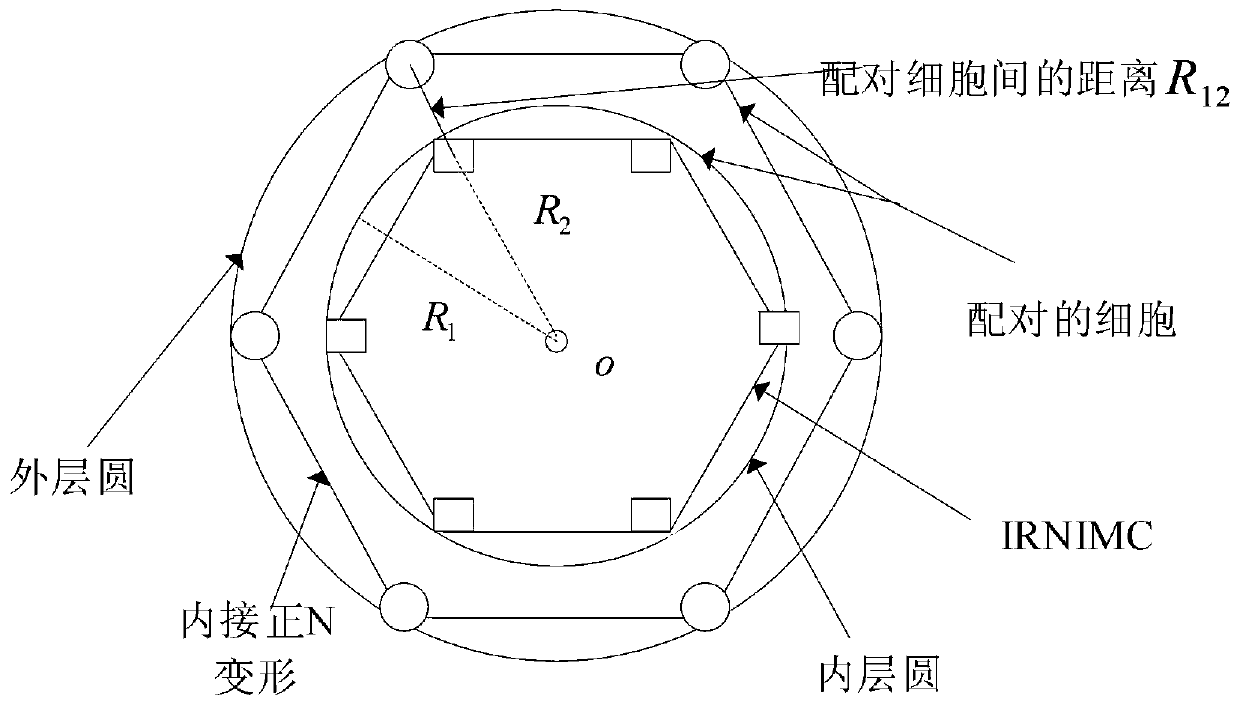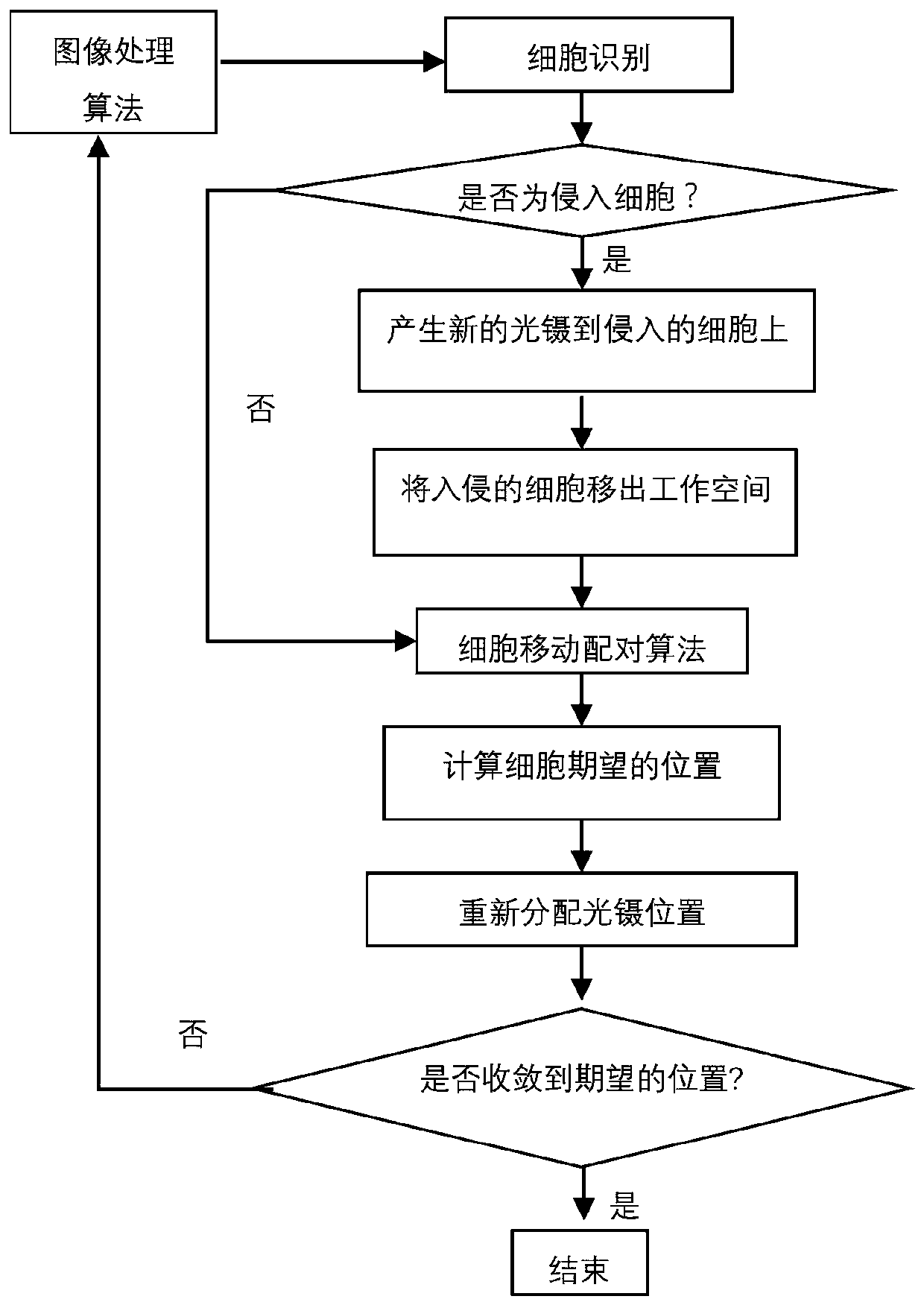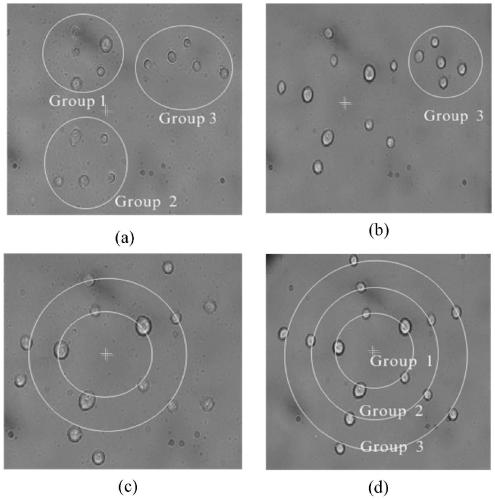Method for automatically implementing pairing of multiple sets of cells
A technology for grouping cells and cells, which is applied in the field of automatic realization of multi-group cell pairing, and can solve problems such as irrelevant cell particles and collisions
- Summary
- Abstract
- Description
- Claims
- Application Information
AI Technical Summary
Problems solved by technology
Method used
Image
Examples
Embodiment Construction
[0019] The invention will be described in further detail below in conjunction with the accompanying drawings.
[0020] 1) Establish a kinetic model for optical tweezers to capture cell movement and pairing. Consider M groups of cells, each group containing N cells. The kinetic equation for capturing the i-th cell (i=1,2...N) in the k-th group (k=1,2...M) by optical tweezers is as follows:
[0021]
[0022] where m ik and q ik are the mass and position of the i-th captured cell in the k-th group, respectively; and are the velocity and acceleration of the cell, respectively; F trap and F drag are the light-harvesting force and viscous resistance, respectively; a ik and b ik are the stiffness coefficient and viscous drag coefficient of the optical tweezers, respectively; u ik are the position coordinates of the focal point of the optical tweezers.
[0023] The multigroup cell movement and pairing control problem is formulated as follows:
[0024] Consider M groups...
PUM
 Login to View More
Login to View More Abstract
Description
Claims
Application Information
 Login to View More
Login to View More - R&D
- Intellectual Property
- Life Sciences
- Materials
- Tech Scout
- Unparalleled Data Quality
- Higher Quality Content
- 60% Fewer Hallucinations
Browse by: Latest US Patents, China's latest patents, Technical Efficacy Thesaurus, Application Domain, Technology Topic, Popular Technical Reports.
© 2025 PatSnap. All rights reserved.Legal|Privacy policy|Modern Slavery Act Transparency Statement|Sitemap|About US| Contact US: help@patsnap.com



